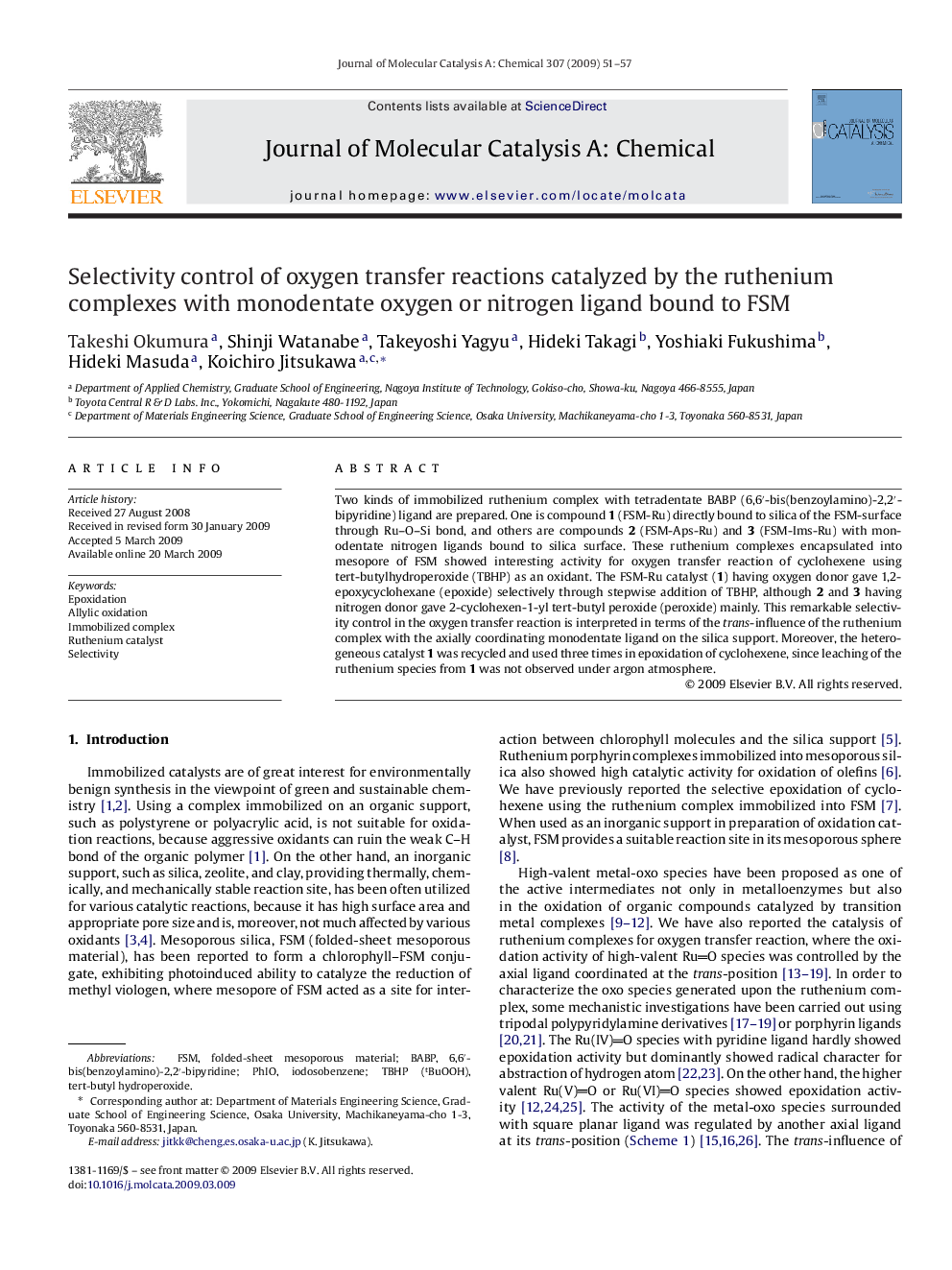| کد مقاله | کد نشریه | سال انتشار | مقاله انگلیسی | نسخه تمام متن |
|---|---|---|---|---|
| 67621 | 48489 | 2009 | 7 صفحه PDF | دانلود رایگان |

Two kinds of immobilized ruthenium complex with tetradentate BABP (6,6′-bis(benzoylamino)-2,2′-bipyridine) ligand are prepared. One is compound 1 (FSM-Ru) directly bound to silica of the FSM-surface through Ru–O–Si bond, and others are compounds 2 (FSM-Aps-Ru) and 3 (FSM-Ims-Ru) with monodentate nitrogen ligands bound to silica surface. These ruthenium complexes encapsulated into mesopore of FSM showed interesting activity for oxygen transfer reaction of cyclohexene using tert-butylhydroperoxide (TBHP) as an oxidant. The FSM-Ru catalyst (1) having oxygen donor gave 1,2-epoxycyclohexane (epoxide) selectively through stepwise addition of TBHP, although 2 and 3 having nitrogen donor gave 2-cyclohexen-1-yl tert-butyl peroxide (peroxide) mainly. This remarkable selectivity control in the oxygen transfer reaction is interpreted in terms of the trans-influence of the ruthenium complex with the axially coordinating monodentate ligand on the silica support. Moreover, the heterogeneous catalyst 1 was recycled and used three times in epoxidation of cyclohexene, since leaching of the ruthenium species from 1 was not observed under argon atmosphere.
Ruthenium complexes immobilized into mesopore of FSM shows interesting catalytic activity for oxygen transfer reaction of cyclohexene using tert-butylhydroperoxide (TBHP) as an oxidant. The FSM-Ru catalyst (1) having oxygen donor gives 1,2-epoxycyclohexane selectively through stepwise addition of TBHP, but FSM-Aps-Ru (2) or FSM-Ims-Ru (3) having nitrogen donor gives 2-cyclohexen-1-yl tert-butyl peroxide mainly. This remarkable selectivity control in the oxygen transfer reaction is interpreted in terms of the trans-influence of the ruthenium complex with the axially coordinating monodentate ligand on the silica support.Figure optionsDownload as PowerPoint slide
Journal: Journal of Molecular Catalysis A: Chemical - Volume 307, Issues 1–2, 15 July 2009, Pages 51–57